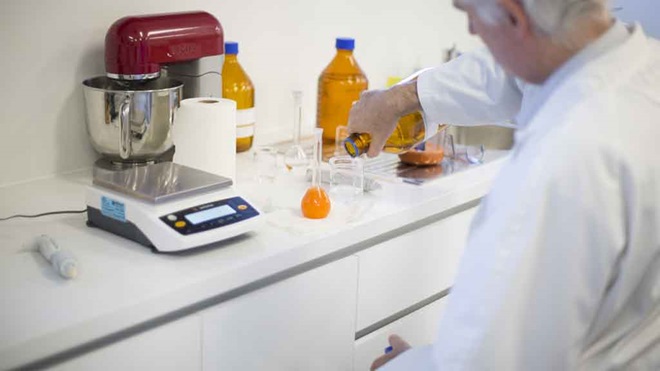There are a lot of claims made about different juicer brands and types. "This one makes more juice, faster! That one extracts more nutrients! This one is easier to clean!" And so on. That's why we put them to the test, to sort the truth from the myths and the best from the rest. Here's how we do it.
On this page:
- Our expert testers
- How we choose what we test
- How we test
- Test criteria explained
- Our test lab
- Ready to buy?
Our home economist Fiona Mair and tester Chantelle Dart know their way around a kitchen and have endless knowledge about kitchen appliances. Fiona's 30 years of experience means she's seen lots of new technology enter the kitchen space. She's put many juicers to the test over the years and has fine-tuned our test method to reflect the latest trends, such as the rise in popularity of adding green leafy vegetables to the mix.
How we choose what we test
With so many to choose from, what makes us choose one juicer to test over another? As with most of our product testing, our aim is to test the most popular brands and types on the market and what you are most likely to see in the shops. We cover both fast (centrifugal) and slow juicer types.
We survey manufacturers to find out about their range of products, we check market sales information and we also check for any member requests to test specific juicers. From this information we put together a final list that goes to our buyers. They then head out to the retailers and purchase each product, just as a normal consumer would. We do this so we can be sure they are the same as any consumer would find them and not 'tweaked' in any way.
How we test
We process a kilogram each of carrots, apples and oranges, and a combination of English spinach, kiwi, pear, cucumber, celery, and mint to make green juice. From these tests, we evaluate each juicer's ability to juice foods with varying degrees of hardness and texture, and measure their yield and juicing time.
We also assess them for ease of use. Firstly, we assess how easy it is to make juice; does the fruit have to be cut up into small pieces, or can you put whole fruit into the chute? Is the juicer easy to put together, and take apart again for cleaning and storage? And last, but not least, there's the actual cleaning up; juicing can be a messy business so a model can win points here for making the clean-up as simple as possible.
In the past we also had juice samples assessed for nutritional content. The juices were assessed for Vitamin C, calcium, iron and magnesium. We found no particular type of juicer fares better or worse for this, so we focus our test on ease of use, juicing time and yield. Nutritional results are discussed in more detail in our buying guide.
Test criteria explained
The overall score is made up of:
- ease of use (70%)
- juicing yield (30%)
Ease of use is based on:
- general ease of juicing and how small the pieces have to be to fit into the chute (50%)
- ease of assembly and dis-assembly (25%)
- ease of cleaning (25%).
We think that if a juicer is too difficult and fiddly to use, it's more likely to stay in the cupboard, so we give ease of use a high weighting.
Although we test the juices produced for nutritional content and they serve as a good guide to what you can expect, these don't factor into our overall score, because a number of variables may contribute to the results. These may include the batch of fruit, time of year or the time the juice is exposed to the air.
Our test lab
We maintain a kitchen lab that is up to date with the latest reference machines and calibrated measurement tools for our testers to bring you the right results.
For any testing required where we don't have the necessary in-house skill or equipment, such as nutritional analysis, we use an external NATA-accredited lab.
Ready to buy?
Check out our juicer buying guide so you know what to look for, and our reviews to find the best models.
We're on your side
For more than 60 years, we've been making a difference for Australian consumers. In that time, we've never taken ads or sponsorship.
Instead we're funded by members who value expert reviews and independent product testing.
With no self-interest behind our advice, you don't just buy smarter, you get the answers that you need.
You know without hesitation what's safe for you and your family. And our recent sunscreens test showed just how important it is to keep business claims in check.
So you'll never be alone when something goes wrong or a business treats you unfairly.
Learn more about CHOICE membership today
Stock images: Getty, unless otherwise stated.



